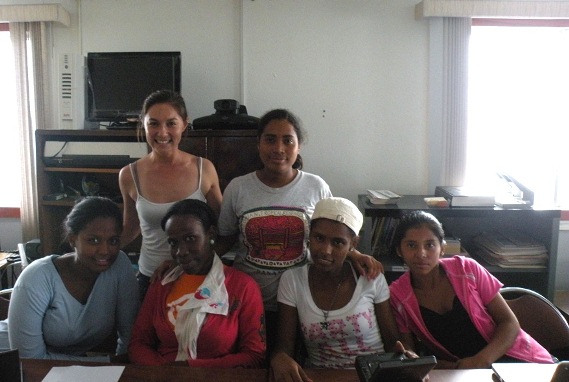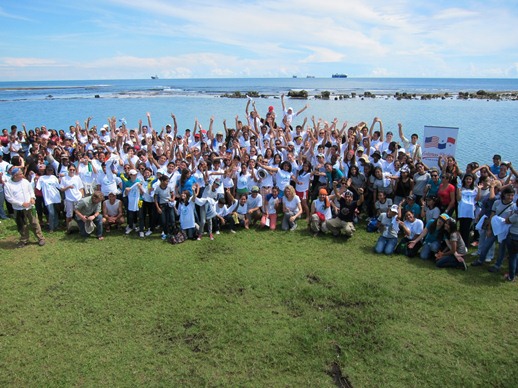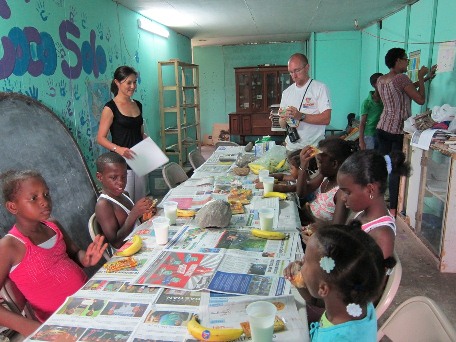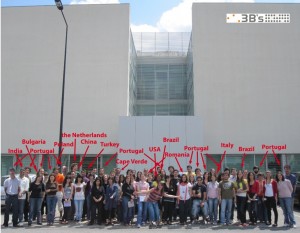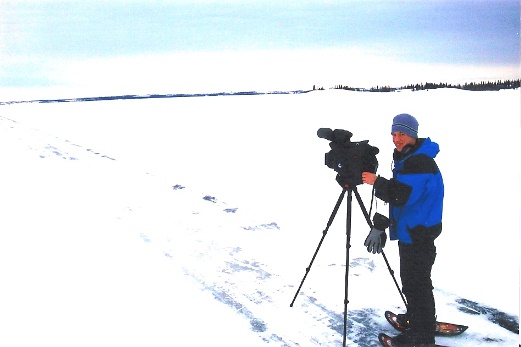
I remember the exact moment I found out that I’d received a Fulbright grant to study in Canada’s Northwest Territories. I was driving cross-country when a series of tornadoes forced me to take shelter in a ramshackle motel in Eastern Colorado. The walls of the room were hand painted, floor to ceiling, in murals of ducks flying over forested lakes.
When I logged into my email and found the acceptance letter, I literally jumped up and gave the ducks high fives. Later that night as I ate a celebratory dinner of soggy pizza from the gas station next door, I stood by the tiny window in my bathroom, watching tumbleweed lash the still grazing bison.
My memory of that night is so vivid because I had fantasized about living in the Arctic since I was a little kid. I was drawn to the remoteness, to nature in its most pristine form. I understood that climate change was having a profound effect on the Northern ecosystem, but it was still some of the most untouched land on earth.
My Fulbright project would investigate how the Inuit were adjusting, physically and culturally, to the changes brought to the region by a warming planet. Earlier ice melt and later freeze up were altering the migration patterns of the herds the Inuit relied on for sustenance. Non-perishable foods shipped in on barges during the summer had introduced high levels of salt, sugar and preservatives to their diet. From the extensive research I’d done, I’d concluded that these nutritional challenges were the largest risk factor for public and community health. I packed my parka and boots and boarded the plane; confident that I knew what I’d find when I arrived.
My final flight was on an eight seat plane that was built like a tank. We flew over the Northwest Passage and landed on a rocky strip of gravel outside a small community. I’d gotten permission from the mayor and town council to conduct research, so I was uncomfortably surprised the next day when no one would make eye contact or talk to me.
I spent most of my first month wandering along the shore of the ocean and watching the sled dogs pace restlessly. Over that time I slowly came to realize that everything I thought I knew about the Arctic was wrong. No one wanted to talk to me about my research, because the questions I was asking weren’t relevant to their lives. It was a humbling experience. I felt betrayed by the years of research I’d conducted in preparation for my project. With the ubiquity of videos, photos and written material, it was easy to feel as though I already knew the Arctic before I arrived.
Once I was able to let go of my preconceived notions, the community really opened up to me. I started to learn about all of the concerns they did have, their struggles with poverty, questions of sovereignty, justice, education, land use and tourism. As we built trust, people started to confide in me, sharing stories that had seldom passed their lips. By the time the fellowship ended, I had gained a much more nuanced and powerful understanding of how climate change and shifting global economic structures were impacting the Inuit’s public and community health.
It would have been impossible for me to develop such a complex understanding without actually living in the Arctic. That’s the power of Fulbright. I learned how to listen for what was really being said, rather than what I thought I should hear. I learned that conducting literature-based research is important, but books can never tell the whole story. The only way to really know the world is to reach across the globe and make human connections.
Since my Fulbright grant, I’ve gone on to locate funding for two large research projects, learn a new language, and secure a contract for my first book, Hiding in Plain Sight, which will be published in 2013. The skills and knowledge I developed through the grant helped me in every one of those endeavors. Fulbright applicants tend to be intelligent, confident, driven, and resilient. But the grant helps hone those abilities on a professional level.
The Fulbright Association maintains a large support network around the world. Your ties to that global community don’t end when you return to your home country. In addition to working as a Fulbright Alumni Ambassador, I’ve also been a mentor to Fulbrighters studying in my city and participated in many events put on by my local chapter. These connections have proven invaluable both personally and professionally.
So how do you get involved in this exciting opportunity? It all starts with the application. Find someone you trust to edit your essays. Tell them you want the most honest and rigorous feedback they can give. It’s important that the proposal retains the quality of your own voice, but an editor can identify where your ideas are too vague, the language too flowery and information repeated.
Second, be willing to write and rewrite the application materials until they are clear, succinct, detailed and convey your passion. For reference, I rewrote my project proposal eight times. The degree of organization and professionalism of your application materials will speak to your ability to undertake the responsibility of teaching or researching in a foreign country.
In terms of the application itself, it’s important to approach the process strategically. At the outset it may seem that you don’t have enough space to convey everything you’d like the review committee to know. Be creative in how you include information. For example, there were a few accomplishments that I couldn’t fit into my project proposal or personal narrative, so I asked my references to discuss those achievements in the letters they were writing.
The Foundation for Educational Exchange Between Canada and the United States, or Canadian Fulbright Commission, wants to work with you. My research took place in the extreme North, where there were no realistic options for field supervisors. By planning ahead and starting the conversation with the Foundation early in the process, we were able to come up with a solution that allowed me to conduct my research and have adequate supervision.
Lastly, I was initially nervous to apply to the program because I’m a female-to-male transsexual. I’d read Fulbright’s statement about celebrating and supporting diversity, but it didn’t say anything about transsexuals. Trans people still face extreme discrimination in the United States and I wasn’t sure a government organization would want me. I spent a long time agonizing over whether to apply to the program. I’m glad I did. As a Fulbright Ambassador, I now have a professional relationship with many of the people who are on the application committee. I can attest that they truly seek out and value all diversity, even if they haven’t listed every permutation in their statement. So dream big and know that you, with all that encompasses, are welcome and wanted at Fulbright.
Photo: Zane Thimmesch-Gill, 2008-2009, Canada, filming on an ice road connecting two communities on the shores of Great Slavey Lake in the Northwest Territories
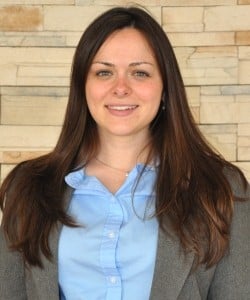 Megan Banick’s Fulbright Public Policy Fellowship placement is in the Guatemalan Ministry of Education as an Educational Researcher consulting on various education topics such as intercultural-bilingual education quality, civic education through student government, and international standardized testing. She is also leading a project for the Ministry on academic disinterest and cultural perceptions in Guatemala. Previously interning at a local NGO, she supported an agriculture and microbusiness training program in the same rural area where her current work will take place. Further, as an observer of a local mayoral candidate’s campaign, she gained a stronger understanding of the complex challenges facing democracy and public participation in rural, indigenous areas.
Megan Banick’s Fulbright Public Policy Fellowship placement is in the Guatemalan Ministry of Education as an Educational Researcher consulting on various education topics such as intercultural-bilingual education quality, civic education through student government, and international standardized testing. She is also leading a project for the Ministry on academic disinterest and cultural perceptions in Guatemala. Previously interning at a local NGO, she supported an agriculture and microbusiness training program in the same rural area where her current work will take place. Further, as an observer of a local mayoral candidate’s campaign, she gained a stronger understanding of the complex challenges facing democracy and public participation in rural, indigenous areas.

